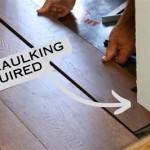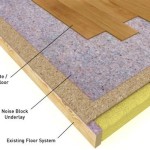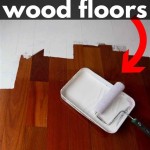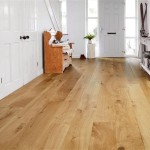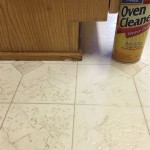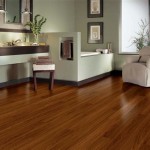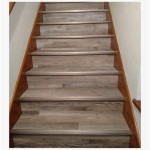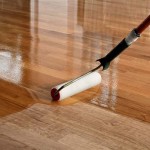Will Double Sided Carpet Tape Damage Hardwood Floors And Grout?
The question of whether double-sided carpet tape can damage hardwood floors and grout is a common concern for homeowners and renters alike. Carpet tape offers a seemingly straightforward solution for securing rugs and carpets, preventing slips and falls, and maintaining a neat appearance. However, the adhesive properties that make it effective also pose a potential risk to the integrity and aesthetics of underlying surfaces such as hardwood and grout. Understanding the composition of carpet tape, the nature of these surfaces, and the potential interactions between them is crucial to making informed decisions about its use.
Double-sided carpet tape typically consists of a carrier, such as paper, cloth, or plastic film, coated on both sides with an adhesive. The adhesive can be made from a variety of materials, including rubber-based, acrylic-based, or solvent-based compounds. These adhesives are designed to create a strong bond with both the carpet or rug and the underlying floor. This strong bond is what provides the holding power, but it also contributes to the potential for damage during removal. The suitability of a particular tape for use on hardwood or grout depends on several factors, including the type of adhesive, the quality of the substrate material, and the duration of its application.
Hardwood floors, prized for their beauty and durability, are particularly susceptible to damage from aggressive adhesives. The finish on hardwood floors, whether it's polyurethane, varnish, or oil-based, provides a protective layer against wear and moisture. However, this finish can be compromised by the strong bond of carpet tape adhesives. Grout, the material that fills the spaces between tiles, is also vulnerable. Its porous nature makes it susceptible to staining and damage from adhesive residue. Understanding these vulnerabilities is vital for anyone considering the use of double-sided carpet tape.
The Potential Damage to Hardwood Floors
One of the primary risks associated with using double-sided carpet tape on hardwood floors is damage to the finish. The adhesive in carpet tape can bond strongly to the polyurethane or other protective coatings on the wood. When the tape is removed, it can pull away sections of the finish, leaving behind unsightly blemishes and exposing the bare wood underneath. This is especially true if the tape has been in place for an extended period, as the adhesive can cure and become even more difficult to remove.
The type of adhesive used in the carpet tape also plays a significant role. Aggressive, rubber-based adhesives tend to be more prone to leaving residue and damaging the finish than acrylic-based adhesives. Solvent-based adhesives, while offering a strong bond, can also dissolve or soften certain types of finishes, leading to discoloration or surface distortion. Even tapes marketed as "residue-free" can sometimes leave behind a sticky film, particularly if they are exposed to heat or pressure over time.
Beyond the finish, the wood itself can also be damaged if the tape is excessively strong or if the removal process is too forceful. In some cases, the tape can pull up splinters of wood or even delaminate the surface, especially if the hardwood flooring is engineered rather than solid. This type of damage can be difficult and costly to repair, often requiring professional refinishing or even replacement of the affected boards.
The length of time the tape remains on the floor is another crucial factor. The longer the tape stays in place, the stronger the bond becomes, and the greater the risk of damage during removal. Over time, the adhesive can seep into the pores of the wood finish, making it even more difficult to remove without causing harm. Exposure to sunlight and temperature fluctuations can also exacerbate the bonding process, further increasing the likelihood of damage.
To mitigate these risks, it is essential to choose the right type of carpet tape and to use it sparingly. Opting for a tape specifically designed for hardwood floors, with a low-tack adhesive and a non-damaging carrier, is a good starting point. It's also crucial to test the tape in an inconspicuous area before applying it to the entire surface. Regular inspection and timely removal can help prevent long-term bonding and minimize the potential for damage.
The Impact on Grout
While hardwood floors are often the primary concern, grout is another surface that can be negatively affected by double-sided carpet tape. Grout, typically composed of cement, sand, and polymers, is porous and can easily absorb liquids and stains. When carpet tape is applied to tile floors, the adhesive can seep into the grout lines, leaving behind a sticky residue that attracts dirt and grime. This can lead to discoloration and unsightly staining that is difficult to remove.
The texture of grout also contributes to its vulnerability. Its rough and uneven surface provides ample crevices for the adhesive to grip, making it challenging to remove completely. Attempting to scrub away the residue can further damage the grout, eroding its surface and creating more pores for dirt and grime to accumulate. In some cases, the adhesive can react with the grout, causing it to crumble or crack.
The color of the grout also influences the visibility of any damage. Light-colored grout is particularly susceptible to staining, making any residue from carpet tape highly noticeable. Dark-colored grout may mask the staining to some extent, but the sticky residue can still attract dirt and grime, leading to a dull and uneven appearance. Regardless of the color, any alteration of the grout's texture or appearance can detract from the overall aesthetic of the tile floor.
The type of tile used in conjunction with the grout can also play a role. While the tile itself is generally impervious to damage from carpet tape, the grout lines surrounding the tile are still vulnerable. Rougher or more porous tile surfaces can also make it more difficult to remove the tape without leaving residue behind. The type of adhesive used in the carpet tape is another critical factor, with aggressive adhesives posing a greater risk of staining and damage.
To minimize the risk of damage to grout, it is advisable to use carpet tape sparingly and to avoid applying it directly to the grout lines. Instead, focus on securing the edges of the carpet or rug to the tile surfaces, leaving a small gap between the tape and the grout. When removing the tape, use a gentle solvent specifically designed for adhesive removal and avoid harsh scrubbing or abrasive cleaners. Regular cleaning of the grout lines can also help prevent the accumulation of dirt and grime, reducing the visibility of any residual adhesive.
Alternatives to Double-Sided Carpet Tape
Given the potential risks associated with double-sided carpet tape, exploring alternative methods for securing carpets and rugs is often prudent. Several options offer effective solutions without the same level of risk to hardwood floors and grout.
One popular alternative is the use of rug pads. Rug pads provide a cushioning layer between the carpet and the floor, preventing slippage and protecting the floor from scratches and abrasion. They are available in various materials, including felt, rubber, and foam, each offering different levels of grip and protection. Rug pads are also easy to install and remove, leaving no residue behind.
Another option is the use of non-slip mats or strips specifically designed for hardwood floors. These products typically feature a textured surface that provides a strong grip on both the carpet and the floor, preventing slippage without the need for adhesives. They are often made from rubber or silicone and can be easily cut to size to fit any rug or carpet. These mats are removable and reusable, making them a convenient and eco-friendly alternative to carpet tape.
For larger rugs or carpets, strategically placed furniture can also help secure them in place. Positioning heavy pieces of furniture, such as sofas or coffee tables, along the edges of the rug can prevent it from shifting or bunching up. This method is particularly effective in areas with heavy foot traffic. This approach minimizes the need for any adhesive products and protects the floor from potential damage.
Specialized rug anchors or corner grips are another viable option. These small, adhesive-backed devices attach to the corners or edges of the rug and grip the floor, preventing it from curling or sliding. They are typically made from clear or transparent materials, making them discreet and unobtrusive. While they do use adhesive, the amount is usually minimal, and the adhesive is designed to be easily removable without leaving residue behind.
Finally, consider investing in rugs or carpets with built-in non-slip backing. Many modern rugs feature a backing made from latex or other non-slip materials, eliminating the need for additional adhesives or pads. These rugs are designed to stay in place on hardwood floors and tile surfaces, providing a convenient and hassle-free solution. While the initial cost may be slightly higher, the long-term benefits of avoiding potential damage and eliminating the need for additional products can outweigh the investment.

Xfasten Premium Carpet Tape 2 X 5 Yards Residue Free Rug Adhesive For Hardwood Concrete Tiles More

Unsightly Rug Tape Damage On Your Tile Floors K M Can Make It Good As New Steam Cleaning

Xfasten Double Sided Carpet Tape For Area Rugs Heavy Duty Residue Free Rug And Hardwood Floors Indoor Outdoor 2 Inch By 10

Double Sided Carpet Tape Be Used To Secure A Rug On Laminate Flooring Hometalk

Unsightly Rug Tape Damage On Your Tile Floors K M Can Make It Good As New Steam Cleaning

Unsightly Rug Tape Damage On Your Tile Floors K M Can Make It Good As New Steam Cleaning

Xfasten Premium Carpet Tape 2 X 10 Yards 6 Packs Residue Free Rug Adhesive For Hardwood Concrete Tiles More

How To Repair A Carpet Patch Services In O Fallon Mo

Double Sided Carpet Tape Be Used To Secure A Rug On Laminate Flooring Hometalk

L And Stick Flooring 5 Myths Debunked
See Also
